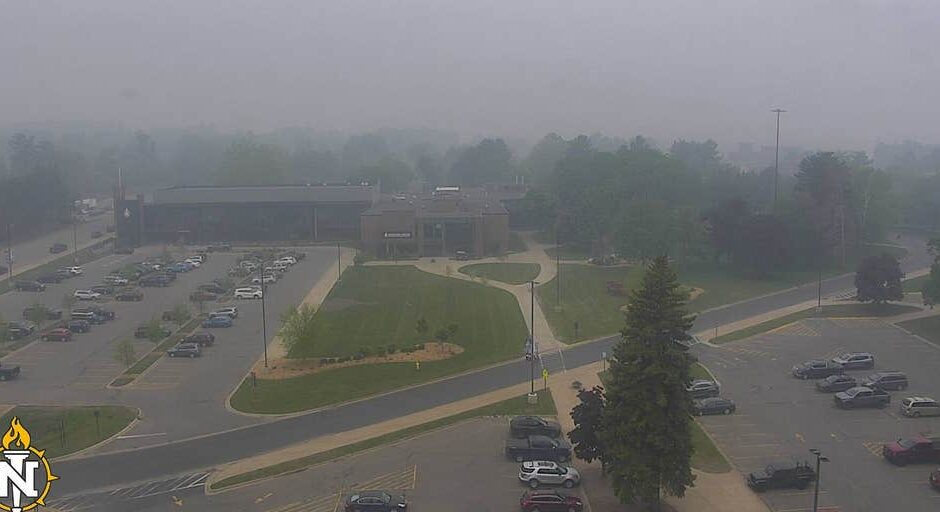
Air quality reached hazardous levels in Michigan’s Upper Peninsula and unhealthy around Minneapolis as smoke from Canadian wildfires pushed south into the U.S.
MINNEAPOLIS – Wildfires in Canada continue to spread and affect the air quality of bordering U.S. states.
With the wildfires not expected to slow down, a continued drop in air quality is possible for some U.S. cities, especially in the Upper Midwest.
Air quality alerts cover all of Wisconsin, Iowa, and most of Minnesota and Michigan’s Upper Peninsula through at least Thursday morning.

(FOX Weather)
According to IQAir.com, Minneapolis was ranked fourth in the world Tuesday for cities with the worst air quality. The Minnesota Pollution Control Agency advised individuals with lung disease, asthma, heart conditions and other health concerns to limit their time outdoors.
Marquette, Michigan, had a rating of 817 on Tuesday afternoon, while the town of Hancock peaked at 279 late Tuesday morning.

Canadian wildfire creates a smoke-filled sky in Marquette, Michigan.
(Northern Michigan University)
Communities south of the U.S.-Canada border reported AQI ratings between 200 and 400, which are considered to be unhealthy or even hazardous.
A value between 0 and 50 on the AQI scale is considered “good,” while anything over 301 reaches dangerous levels.

Uncontrolled wildfires in Canada continue to waft smoke into the central and eastern U.S. This smoky scene was captured near Sheboygan, Wisconsin, on Sunday. Air quality alerts are in effect to the west in Minnesota.
In addition to poor air quality and hazy skies, another noticeable effect is vibrant orange-colored sunrises and sunsets as light is filtered by the smoke particles.
While not impacting air quality levels, smoky skies have also been reported in the Northeast and mid-Atlantic regions.

Hazy, smoke-filled skies observed in Berkshire, New York, on Tuesday morning.
(Brian Donegan / FOX Weather)
#Major #U.S #city #among #worst #air #quality #world #Canadian #wildfire


